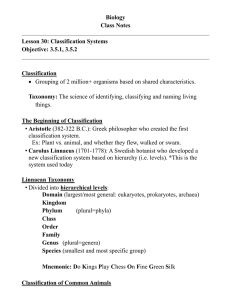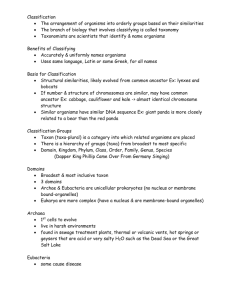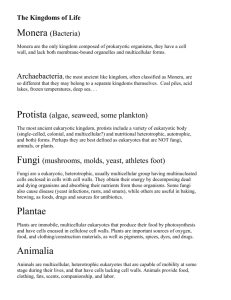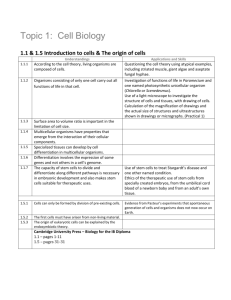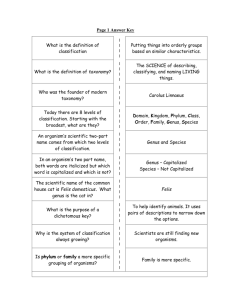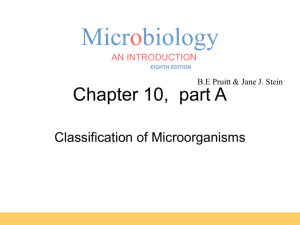Chapter 10: Classification of Microorganisms Below you will find
advertisement
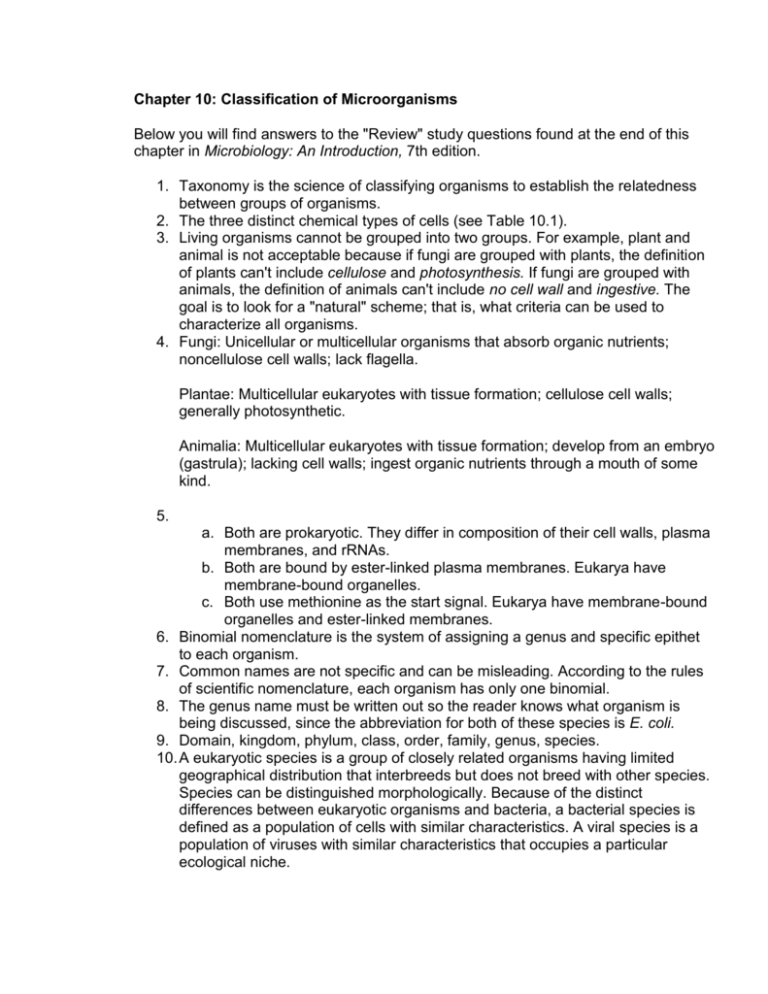
Chapter 10: Classification of Microorganisms Below you will find answers to the "Review" study questions found at the end of this chapter in Microbiology: An Introduction, 7th edition. 1. Taxonomy is the science of classifying organisms to establish the relatedness between groups of organisms. 2. The three distinct chemical types of cells (see Table 10.1). 3. Living organisms cannot be grouped into two groups. For example, plant and animal is not acceptable because if fungi are grouped with plants, the definition of plants can't include cellulose and photosynthesis. If fungi are grouped with animals, the definition of animals can't include no cell wall and ingestive. The goal is to look for a "natural" scheme; that is, what criteria can be used to characterize all organisms. 4. Fungi: Unicellular or multicellular organisms that absorb organic nutrients; noncellulose cell walls; lack flagella. Plantae: Multicellular eukaryotes with tissue formation; cellulose cell walls; generally photosynthetic. Animalia: Multicellular eukaryotes with tissue formation; develop from an embryo (gastrula); lacking cell walls; ingest organic nutrients through a mouth of some kind. 5. a. Both are prokaryotic. They differ in composition of their cell walls, plasma membranes, and rRNAs. b. Both are bound by ester-linked plasma membranes. Eukarya have membrane-bound organelles. c. Both use methionine as the start signal. Eukarya have membrane-bound organelles and ester-linked membranes. 6. Binomial nomenclature is the system of assigning a genus and specific epithet to each organism. 7. Common names are not specific and can be misleading. According to the rules of scientific nomenclature, each organism has only one binomial. 8. The genus name must be written out so the reader knows what organism is being discussed, since the abbreviation for both of these species is E. coli. 9. Domain, kingdom, phylum, class, order, family, genus, species. 10. A eukaryotic species is a group of closely related organisms having limited geographical distribution that interbreeds but does not breed with other species. Species can be distinguished morphologically. Because of the distinct differences between eukaryotic organisms and bacteria, a bacterial species is defined as a population of cells with similar characteristics. A viral species is a population of viruses with similar characteristics that occupies a particular ecological niche. 11. (See Table 10.5) Used primarily for identification: morphological characteristics differential staining biochemical tests serology phage typing fatty acid profiles Used primarily for taxonomic classification: flow cytometry DNA base composition DNA fingerprinting rRNA sequencing PCR nucleic acid hybridization Data obtained from laboratory tests employing any (or all) of these twelve techniques can be assimilated using numerical taxonomy to provide information on classification. 12. Most microorganisms do not contain structures that are readily fossilized, making it difficult to obtain information on the evolution of microorganisms. Recent developments in molecular biology have provided techniques for determining evolutionary relationships amongst bacteria. 13. A and D appear to be most closely related because they have similar G-C moles %. No two are the same species. Below you will find answers to the "Multiple-Choice" study questions found at the end of this chapter in Microbiology: An Introduction, 7th edition. 1. b 2. e 3. d 4. b 5. e 6. a 7. a 8. e 9. a 10. b Note: The answers to the Critical Thinking and Clinical Applications questions are available to instructors only, and are found in the Instructor's Manual.


